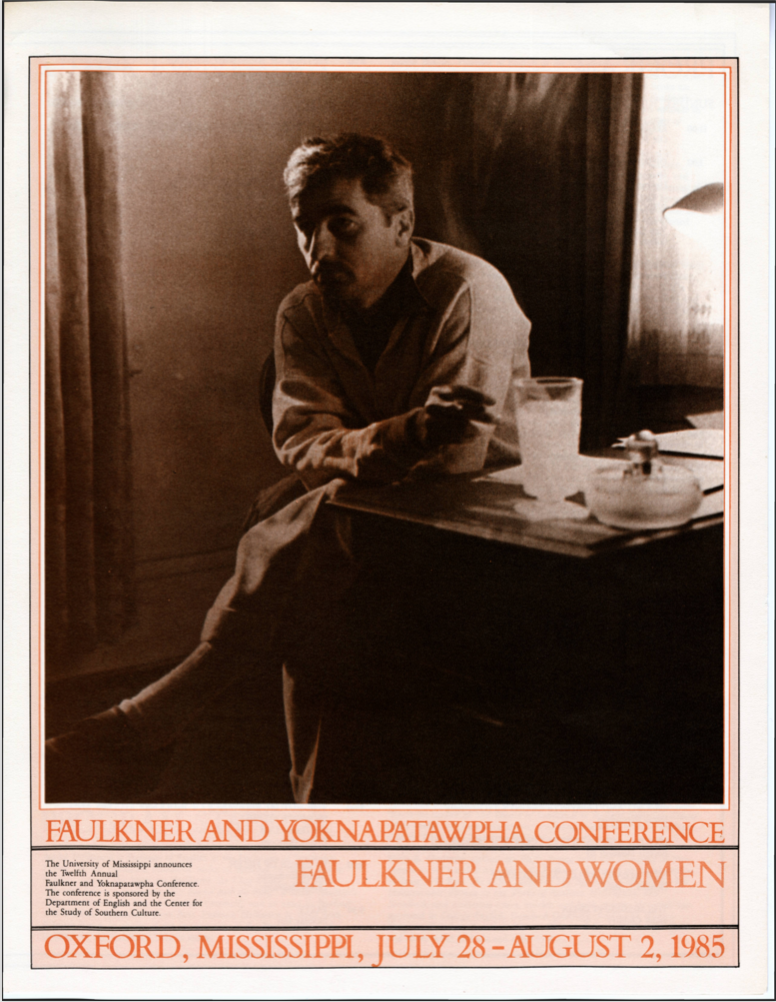
In Praise of Helen
Location
Ole Miss Union Ballroom
Start Date
2-8-1985 8:00 PM
Description
Faulkner’s portrayal of Lena Grove fits into a time-honored literary tradition of encomium, celebrating Woman as a fertility goddess or identifying her with some absolute concept like Beauty or Truth. Associated with Helen of Troy, the Ephesian Diana, and the Virgin Mary, Lena appears in her monumental simplicity as a new avatar of the archaic Magna Mater. It is interesting, however, to examine how the mythic text from which she emerges is appropriated and transformed by Faulkner’s fiction, how it is both duplicated and displaced in the writing process. Lena is no doubt the Great Mother, the abiding earth, yet through her association with Keats’s "Ode on a Grecian Urn," she also partakes of the Apollinian ideality of art. Significantly, she is the only female character in the novel to have no share of darkness, and her privileged relation to light points to her unique status: blending motion and stasis, substance and form, she alone transcends antinomies, and being pregnant does not prevent her from remaining "the still unravish’d bride of quietness." For all her earthiness Lena never loses her mythic purity. In the opening chapter she is not yet a mother, still at one with her child, suspended in a blessed time prior to birth and death; in the epilogue, she in not yet a man’s companion, still an object of desire out of reach. Her functions in real life are each time deferred so that her ideal status is never in jeopardy. The "other scene," however, is never far away, and on that scene the urns are cracked. Change one letter, and womb turns into tomb, "grove" into grave.
Relational Format
Conference Proceeding
Recommended Citation
Bleikasten, André, "In Praise of Helen" (1985). Faulkner and Yoknapatawpha Conference. 29.
https://egrove.olemiss.edu/fy/1985/schedule/29
In Praise of Helen
Ole Miss Union Ballroom
Faulkner’s portrayal of Lena Grove fits into a time-honored literary tradition of encomium, celebrating Woman as a fertility goddess or identifying her with some absolute concept like Beauty or Truth. Associated with Helen of Troy, the Ephesian Diana, and the Virgin Mary, Lena appears in her monumental simplicity as a new avatar of the archaic Magna Mater. It is interesting, however, to examine how the mythic text from which she emerges is appropriated and transformed by Faulkner’s fiction, how it is both duplicated and displaced in the writing process. Lena is no doubt the Great Mother, the abiding earth, yet through her association with Keats’s "Ode on a Grecian Urn," she also partakes of the Apollinian ideality of art. Significantly, she is the only female character in the novel to have no share of darkness, and her privileged relation to light points to her unique status: blending motion and stasis, substance and form, she alone transcends antinomies, and being pregnant does not prevent her from remaining "the still unravish’d bride of quietness." For all her earthiness Lena never loses her mythic purity. In the opening chapter she is not yet a mother, still at one with her child, suspended in a blessed time prior to birth and death; in the epilogue, she in not yet a man’s companion, still an object of desire out of reach. Her functions in real life are each time deferred so that her ideal status is never in jeopardy. The "other scene," however, is never far away, and on that scene the urns are cracked. Change one letter, and womb turns into tomb, "grove" into grave.

